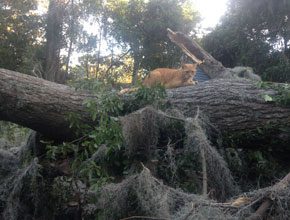
By Margaret Evans, Editor
Lowcountry Weekly has an excellent garden column produced by a rotating team of master gardeners who write as well as they grow things. Do not mistake this for that, nor me for one of them. That column and those writers are entirely out of my league.
One of our garden columnists, Will Balk, Jr., often refers to himself a “lazy gardener,” but his columns scream otherwise. Like his fellow garden writers, Laura Lee Rose, Alice Massey, and Sandra Educate, Will is energetic, passionate, philosophical, and dedicated to the gardening life. Gardening is not just something these folks do; it’s who they are.
The garden column is one of my favorite regular submissions to Lowcountry Weekly, and not just because it rarely needs editing. (Again, these are terrific writers!) Every time this column appears in my inbox, I know two things for sure: I’m going to learn something new, and I’m going to be inspired. Education and Inspiration. The older I get, the more I crave both.
In a weird twist of fate, I was thinking about our garden columnists recently – and how much I admire them – when I stumbled upon a bit of “botanical humor” on Facebook. Someone had posted a cartoon featuring two news anchors and the headline: “Biologists announced today that plants are fully sentient and do, in fact, feel pain. In a related story, the CDC announced a nationwide suicide watch for vegans.”
Funny… I guess? In any case, the cartoon sent me on an Internet quest to learn more about plants and pain. Was there any truth to this notion?
As it turns out, the answer is complicated. I found an interesting, well-researched essay by Laurie L. Dove on the science page of the How Stuff Works website. It starts like this:
Few moments evoke a sense of summer like catching a whiff of freshly cut grass. For many people, it’s a pleasant sign that warmer temperatures are here to stay. For the grass, however, this scent signals an entirely different story.
The smell we associate with freshly cut grass is actually a chemical distress call, one used by plants to beg nearby critters to save them from attack (usually it’s an affront by insects, but in this case, it’s lawnmower blades). After all, when danger strikes – whether it’s landscaping equipment or a hungry caterpillar – plants can’t lift their roots and run. They must fight where they stand.
Dove goes on to explain how plants employ a host of molecular responses to protect themselves from harm. They use “chemical communications” to poison their enemies, alert surrounding plants to possible dangers, and even to call helpful insects to their aid. She says there’s also evidence that plants can hear themselves being eaten (eek!), citing researchers at the University of Missouri-Columbia who found that plants respond to chewing sounds made by caterpillars that are dining on them. “As soon as the plants hear the noises, they respond with several defense mechanisms,” she writes.
For some researchers, evidence of these complex communication systems suggests that plants feel pain – or something like it. Others argue that there cannot be pain without a brain to register the sensation. (No brain, no pain!) According to Joe Loria at the Mercy for Animals website, plants can’t actually “feel” anything – they have no sensory nerve cells – but they do respond to stimuli to protect themselves from harm, which is basically how humans and animals use pain.
As I continued researching this topic, I found myself putting the “pain” question on the back burner as I became increasingly fascinated with the notion that plants communicate and even warn each other of outside threats. No doubt, this is something my esteemed garden columnists already knew, but it was breaking news for me.
(With apologies to Will Balk, I am the original lazy gardener. I know very little about the secret life of plants. I just put them in the dirt, water them, and cross my fingers.)
According to Michael Pollan’s article The Intelligent Plant (The New Yorker, 2014), plants can alter the course of their growth to circumvent obstacles or reach for support with their tendrils. This “talent” springs from a complex biological network distributed through their roots, leaves and stems that helps them grow, survive, and reproduce. Trees in a forest can even warn their relatives of impending insect attacks! How cool is that?
The more I read about plants – their “communication,” their “pain,” their innate “intelligence” – the more they began to seem like people to me. I’ve long felt that way about animals – and, have I mentioned, birds? – but now I was being challenged, once again, to expand my definition of “sentience,” and, in a way, to expand my circle of friends. My earthly family. I felt my worldview shifting ever so slightly.
If everything feels, and everything communicates, and everything has intelligence . . . then everything matters as much as everything else, right? And everything is connected to everything else. I realize this is no thunderous revelation – the slogan “we’re all connected” adorns bumper stickers galore these days – but somehow, studying up on plants and their “pain” drove the point home in a fresh and vivid way.
This is not to say I’ll be giving up salads. (Heck, I haven’t even given up burgers, but learning about factory farms sure got me pondering it.) Will I wince with guilt the next time I’m clipping the azalea bushes? Will the sound of the lawn mower suddenly go from merely irritating to downright sinister? I doubt it.
But I will look at the natural world – starting with my own backyard – through slightly different eyes now. I will see it anew, with more depth, more richness, more complexity. And perhaps I will tread more lightly.
Note to activists and politicians of all stripes: Surely this is how lasting change begins. Not with scolding and shaming, but with education and inspiration. As with plants and animals, so it is with human beings. Everybody matters as much as everybody else. And in the immortal words of REM, everybody hurts.
It’s our garden. Let us tread lightly.






